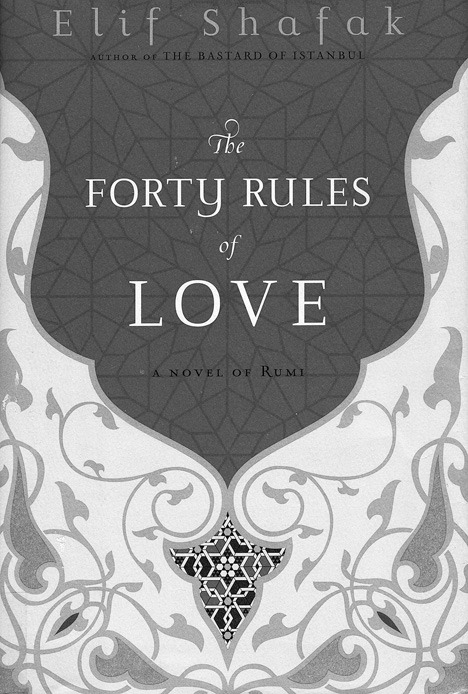Reviewed by Rebecca Cook
Okay, Rumi lovers, this one is for you!
Shafak’s imaginative novel skillfully winds two parallel narratives—one, written in contemporary times, the other in the thirteenth century during Rumi’s transformation from a professor of theology to renown poet and mystic.
Had Rumi not met up with his spiritual mentor, the wandering Sufi dervish Shams of Tabriz, his own infamy may not have been so lasting. Yet, that was not to be. For Rumi’s prose is as penetrating and clear in contemporary society as it was in the thirteenth century.
Although centuries apart, what binds these two stories together are the “Forty Rules of Love.” These 40 rules were carefully taught to Rumi by his beloved Shams. Each “rule” is expertly and succinctly placed by Shafak throughout the novel.
“The Path to the Truth is a labor of the heart, not of the head. Make your heart your primary guide!”
Ella Rubenstein, a 40 year old, modern day American housewife, discovers Rumi’s voice while unraveling her seemingly boring life.
Ella, an unhappily married woman, suspects her prosperous husband of myriad affairs. She remains silent, turns her head and looks for meaning in a new job opportunity. She is hired to review a novel by a curious man named A. Z. Zahara. Zahara regards himself as a Sufi. Through a series of e-mails and blog entries, they begin to know each other.
Meanwhile, back in the thirteenth century, Shams of Tabriz has met Rumi and they have begun a long mentor/student tryst that creates a wide crevice between Rumi, his family and followers and eventually ends with the murder of Shams. (I’m not spilling the beans here for the reader knows this tragic outcome from the beginning.)
“The quest for Love changes us. There is no seeker among those who search for Love who has not matured on the way. The moment you start looking for Love, you start to change within and without.”
And so it goes. Shafak’s novel is riddled with the changes caused by “The Forty Rules of Love”. Rumi changes because of his love for Shams and his enlightened teachings, Rumi’s family and friends change because of Rumi. Ella, our contemporary character, changes because of her assignment and new relationship with Zahara. Her relationship with her husband and family changes. Love goes on changing things serendipitously and new perspectives are asked of all the characters—and their many voices.
Each of Shafak’s chapters start with a specific narrator’s name, place, and century. Each chapter is relatively short and sometimes, crisply to the point. Each begins with the drop cap “B”. A. Z. Zahara’s book Sweet Blasphemy also encapsulates the drop cap style. There is no coincidence here. The author wants us to correlate the similarities and many levels of Love both within and without.
“Try not to resist the changes that come your way. Instead let life live through you. And do not worry that your life is turning upside down. How do you know that the side you are used to is better than the one to come?”
Out of all the characters, Shams is the only one that knows and understands his fate. He willingly lets life live through him in spite of the venom his enemies project. Ella, Zahara, Rumi and the others meet their respective fates with less knowledge and understanding. And, are left to learn the “rules” through hindsight and newly gained wisdom.



